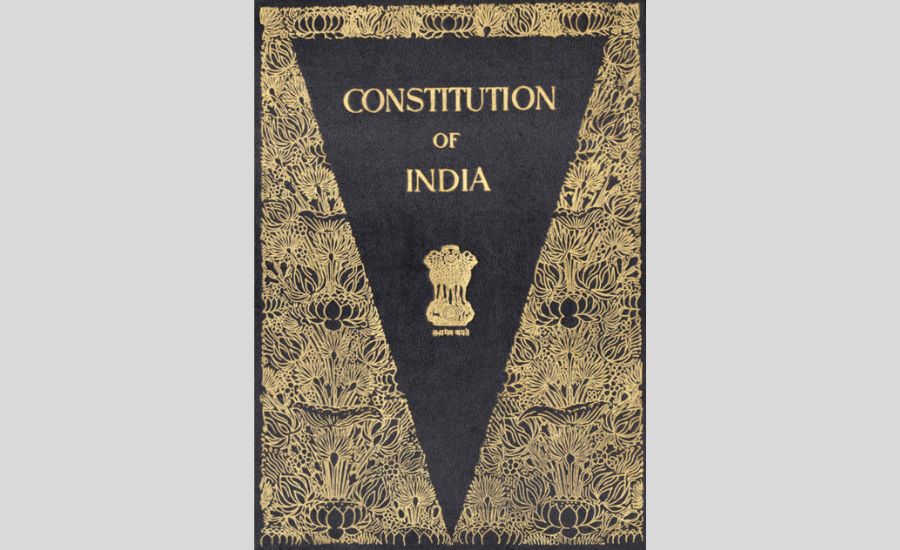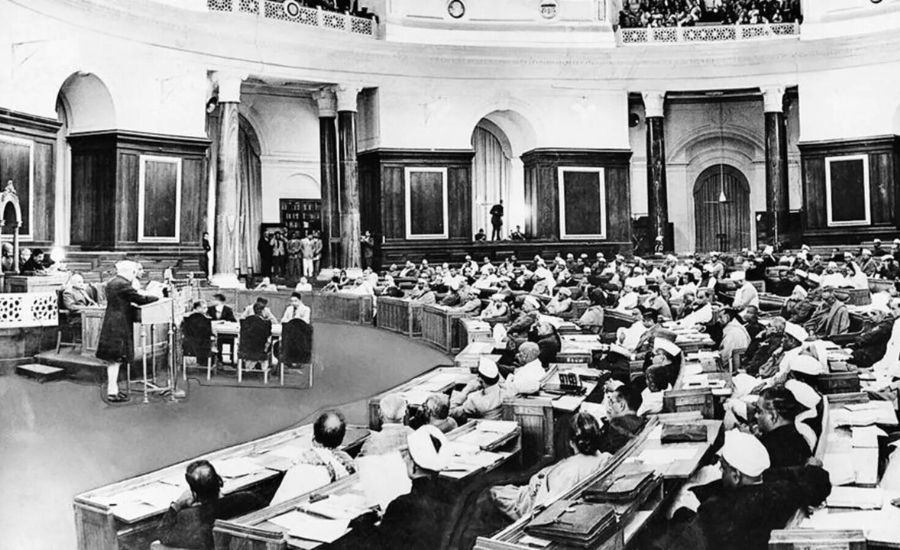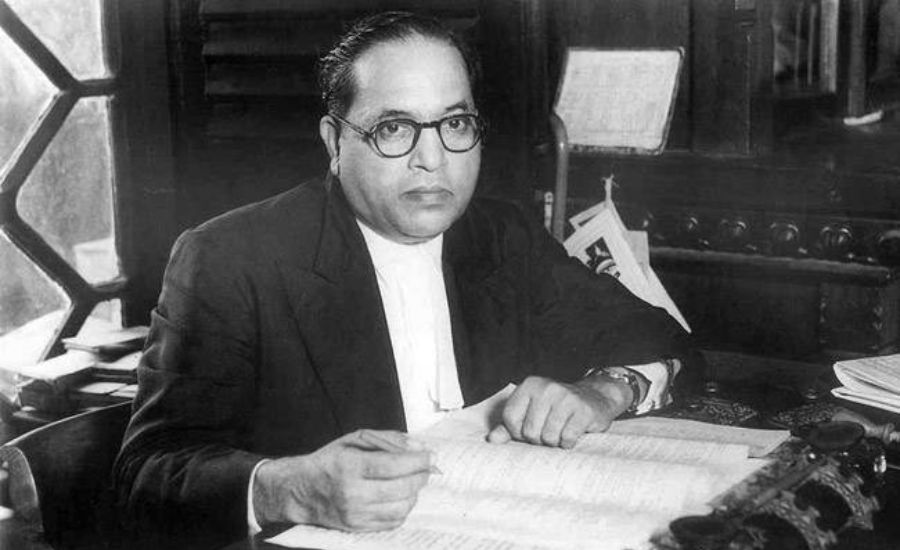
Even before India’s Constitution framers sat for the first time to draft our Constitution on 9 December 1946, there were already ‘sixty-two [Princely] states that framed their own constitution, and 286 others that were involved in making constitutions for unions of states.‘ This is just one of the remarkable and broadly unknown nuggets of Indian constitutional history in ‘Assembly India’s Constitution,‘ a new paper by Ornit Shani and Rohit De. Through extensive research of previously untapped archives, they redirect our attention from the Constituent Assembly to various constitution-making efforts throughout the country, offering a fresh perspective on Indian constitutionalism. The paper explores three compelling case studies to illustrate their point.
The first example brings us to the Princely State of Rewa, where in early 1946, a committee was established to create a constitution for the state based on principles of self-governance and adult suffrage. This process also involved extensive public input during the drafting of the Constitution. The second examines how prominent members of India’s judiciary actively contributed their ideas and proposed amendments to the 1948 Draft Constitution. Lastly, the paper explores instances where tribal groups engaged with Constituent Assembly committees by advocating for constitutional safeguards and presenting their own visions for India’s constitution.
These examples are put in service to challenge three prevailing ideas in the scholarship on Indian constitution-making first, the idea that Indian constitution making was solely an elite-driven process; second, Indian’s were were largely constitutionally ignorant; and third, the notion that the Constitution was exclusively crafted by the Constituent Assembly.
How Elite was Indian Constitution-Making?
In order to establish that the process of constitution making in India was not exclusively driven by elite consensus, it is important to present evidence beyond the mere existence of non-elite constitution-making exercises and their interactions with the Constituent Assembly. It is crucial to delve into whether these engagements had a substantial impact on the procedures followed by the Assembly or the final adopted constitutional text.
In the paper, there is only one instance where the Constituent Assembly substantively engaged with an external group, which relates to Supreme Court and High Court judges. It is evident that the Constituent Assembly took the comments and proposals of these judges seriously by holding special meetings and considering amendments based on their input. This demonstrates a significant level of influence being exerted. However, it should be noted that these judges are part of the elite even though they are not Assembly members. In a broader context, according to Shiva Rao’s committee documents, the Assembly’s efforts to engage with public comments on the Draft Constitution seem to primarily involve elite entities such as ministries, state legislative councils, editors of legal publications, and judges.
Even in instances such as the Princely State of Rewa and Shahanpur, the process of constitution-making appeared to be primarily led by the elites, driven by their own political survival agenda. Although there was some level of interaction with the general population, these initiatives predominantly centred around elite interests. Further, the extent to which these projects were connected to Constituent Assembly and their influence on the Constitution remains uncertain.

In the context of tribal groups, the Constituent Assembly indeed interacted with these communities. However, in order to solidify the overarching contention against an elite-centric viewpoint, the authors need to establish more conclusively the prevalence of this kind of interaction throughout India and if these led to tangible procedural and textual outcomes in the Constituent Assembly.
Were Indians Constitutionally Ignorant?
The authors aim to challenge the prevailing scholarly perspective that views the Indian constitution as a pedagogical tool meant to enlighten an ‘ignorant’ and ‘undemocratic’ public, for whom advancing a constitutional vision was beyond their interest or ability. The most explicit and resolute articulation of this viewpoint was the Constitution’s Chief Drafter, B.R. Ambedkar who in 1948 argued that ‘Constitutional morality is not a natural sentiment. It has to be cultivated. We must realize that our people have yet to learn it. Democracy in India is only a top-dressing on an Indian soil, which is essentially undemocratic.‘

In a debate in the Constituent Assembly, which focused on the role of villages – India’s most prevalent social structure – Ambedkar commented, ‘What is the village but a sink of localism, a den of ignorance, narrow-mindedness, and communalism’. Ambedkar held firmly to this viewpoint. Three years after enacting the Constitution, he was posed with a heavy question: ‘Dr. Ambedkar, do you believe democracy will thrive in India?’ Without delay, Ambedkar answered, ‘No.’ He later expanded upon his response, asserting, ‘Democracy will fail to operate due to our social structure, which is fundamentally at odds with parliamentary democracy…’
The paper emphasizes numerous instances of constitution-making endeavors and public participation, as well as the presentation of constitutional proposals, throughout India. However, the proportion of Indians engaged in these activities still seems minuscule. This reality fails to significantly challenge the perspective that, during the framing of India’s Constitution, Indians, as B.R. Ambedkar vehemently argued on multiple occasions, were not democratic constitutionalists.
An Assembled Constitution?
The authors propose that the crafting of the Indian constitution involved a process of “assembling” disparate and concurrent constitution-making endeavours throughout the nation. The Indian constitution emerged from competing constitutionalisms. Contrary to conventional belief, it wasn’t solely or exclusively the outcome of the Constituent Assembly’s efforts.
It is worth noting that the Constituent Assembly was not the only entity involved in constitution-making – this the authors have strongly shown and established. However, to argue that the Constituent Assembly ‘assembled’ diverse constitution-making initiatives from across India might be a step too far. If we were to embrace the authors’ framing, we must consider this counter-factual: in the absence of these alternative sites of constitution-making, would the procedures followed by the Constituent Assembly and the eventual text it produced have been substantially different?
A broader question arises about who can be considered a constitution maker and thus deemed as a potential contributor to the Constituent Assembly’s efforts. For example, if a small group in Tamil Nadu drafts a constitution, what criteria must they meet to be included in the scope of the Constituent Assembly’s work? Is it when this group submits their draft constitution to the Constituent Assembly or is it when the Assembly formally acknowledges their draft? Perhaps it is at the point when the Assembly makes constitutional decisions based on this draft or engages with it in other significant ways. Is it the case that a constitution-making project conducted in the institutional context of a Constituent Assembly with its procedures and processes, elected albeit indirectly, can be equated with constitutional-making exercises in alternate sites?
This paper appears to be a precursor to an anticipated book, due for release this year. The forthcoming publication will likely provide a more comprehensive response to the concerns raised within this essay. Undeniably, Shani and De have presented us with an innovative and exceedingly detailed analysis of India’s constitutional history. This work, regardless of its broader theoretical claims, surely marks a significant milestone in the study of Indian constitutional history. We look forward to the release of the book eagerly.
